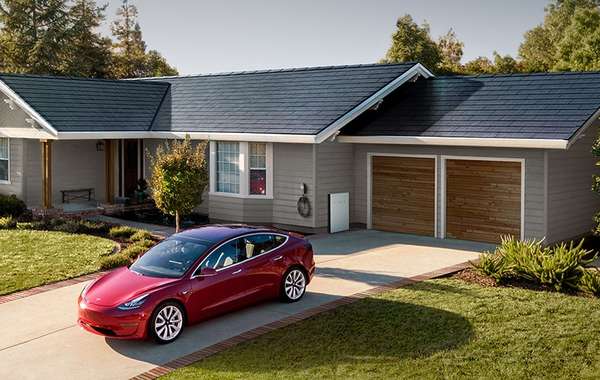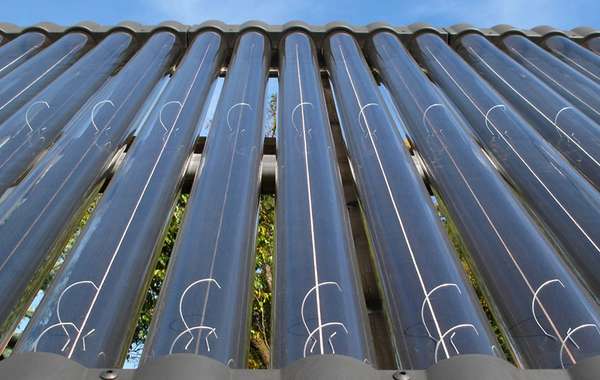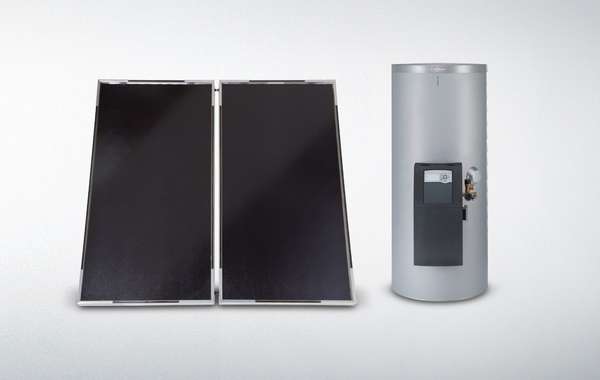Tesla is a powerful brand that when riding on its track record of Electric Vehicles needs to do little but step into a market to get glowing accolades. Some of it is well-deserved, but in the case of their solar shingles that are flooding news feeds, we found very little hard facts behind the big marketing push.
To get the Solar Roof to market, Tesla is partnering with Solar City, a dominant player in the American solar power industry with franchises all over the United States. And while what they've done is a 'two-in-one' product with the roof covering acting as solar panels, that is really nothing new, building integrated photovoltaics (BIPV) has been around for over a decade.
It's a great idea on paper, but because each shingle has to be connected individually it's quite a headache to install, so hopefully Tesla has something new to offer and isn't just repackaging old technology that never got far beyond being just a gimmick. If there is something new going on here that's great, but they've given very few details so we are holding our applause for the moment.
When Tesla brought their Powerwall battery to the market there was similar fanfare, yet it didn't come close to meeting the expectations of the brand or even match the performance of existing batteries and shortly afterwards it was quietly discontinued. It has since been replaced by the higher capacity Powerwall 2.
What we like about Tesla's Solar Roof:

- Almost all solar panels are silica based, Tesla shingles are quartz based, which makes them more efficient and more durable.
- A wide product range mimics the look of terra cotta roof coverings, slate, a smooth glassy look and even something that looks a bit like normal shingles, so they have nailed the aesthetics for making them fit nicely into existing neighbourhoods. Unfortunately some options are best not used in Canada, the mock slate for example would probably hold snow that would otherwise slide off a glass roof, and if your roof is covered in snow you won't be getting any power.
- Elon Musk says they last 2 to 3 times longer than a conventional roof, asphalt shingles are the most commonly used roof covering and last about 20 years, so by our math we assume these will last 40-60 years. We welcome anything that takes market share away from asphalt shingles, which have the largest environmental impact of any building material in the lifecycle of a home.
- A cost-effective and visually appealing solar roofing system like this (if in fact it is one) could potentially create a spike in the private micro-power generation market and take the burden off governments to be solely responsible for moving towards renewable energies.
- Solar Roof shingles are far more resistant to impact than conventional roof coverings, as seen in the image below.

|
|
Tesla solar roof tile impact test © Tesla
|
Our reservations:
For now, our reservations come mostly from a lack of information. Amid the media buzz there was no mention of price, which is never great news for consumers when a product launch fails to include a price tag. Will this be like the high-priced Tesla Model S that is very popular among those with disposable incomes, or will it be like the Tesla Model 3 that is more accessible to the rest of us?
"As for the cost of the actual solar roof, Musk declined to name a specific price, saying only that the cost of a solar roof will be competitive with more traditional roofing solutions" - Popular Mechanics
A fairly extensive search turned up very little about its material composition and nothing on performance, installation and required maintenance.
Also, while Tesla’s partnership with Solar City would provide installation and maintenance, we saw no mention as to whether or not financing would be provided through this partnership. And to our knowledge Solar City is not available in Canada, so neither is the Solar Roof at this time.
Again, speaking to the lack of information:
PV panels change light into electrical current, and their conversion rate ranges from 6% up to around 20%. What that means, is that of the amount of sun hitting a panel, between 6 and 20% is converted into electricity. No information is available yet as to where the Tesla Solar Roof fall on that scale.
The best proven performance is with panels made with Monocrystalline, which boast a conversion rate of somewhere in the 15-20% range, but we have no idea as to the composition of Solar Roof shingles.
We also don't know if they've gone with thin film (which reduces costs but also performance).Thin film solar panels either use cadmium (a very toxic heavy metal) or rare earth metals from the copper family that have enormous environmental repercussions due to extraction. The price for consumers is cheaper but the environmental cost is higher.
Standard Monocrystalline or polycrystalline solar panels are so far the best option at the moment, perhaps Tesla has come out with something better, time will tell.
It's great to see the exposure the home solar industry as a whole gets the second Elon Musk steps into the spotlight with a product, we just wish they would have been more forthcoming with the technical data for their big launch. To date all we know for sure is that Tesla is a master of media, image and branding, we hope when the technical data is made public that they live up to expectations.
Story update:
With Tesla's announcement of their $2.2 billion acquisition of Solar City came another teaser about the solar roof - still nothing solid but it did start another media blitz; go Elon! We still don't know a price, but originally they said it would be comparable to a conventional roof; now they say even it will be even cheaper - and that's before you factor in the electricity savings.
Their claim is that they are much lighter than other roofing materials therefore shipping costs are reduced, and because they are much stronger, there is less loss due to breakage during transport.
The skeptic in us says, sure, they may be lighter and break less than slate or terracotta, but metal roofs are probably the lightest by square foot and I've never seen a shingle or sheet of metal arrive 'broken'.
But hey, who really cares? If they cost triple the price of asphalt shingles it's still a sound investment. Even if there are no actual solar shingles and this is all an elaborate hoax to sell more cars, that's fine by us because it means more electric cars and certainly more people thinking about solar panels.
It's quite possible, and you could even say 'likely', that this will turn out to be as good as they say. But thank you, Tesla, because no matter what you do, once again you set the topic for the day - affordable solar power generation.
Now you know more about the Tesla Solar Roof, Cost, Competitors & What our reviewers think, find more info pages about Solar PV & sustainable & resilient green building techniques here :
Find more about sustainable home construction in the EcoHome Green Building Guide pages |
 |
|
Tesla Model 3 and Tuscan Solar Roof shingles © Tesla
|
 |
|
Solar Roof © Tesla
|





























Regular solar panels are installed on racking that allow for 2-3 inches of air underneath the panels cooler. Do the Tesla shingles have some way to keep them cool? If not, since they are electronic devices, they will lose effectiveness as they get really hot.